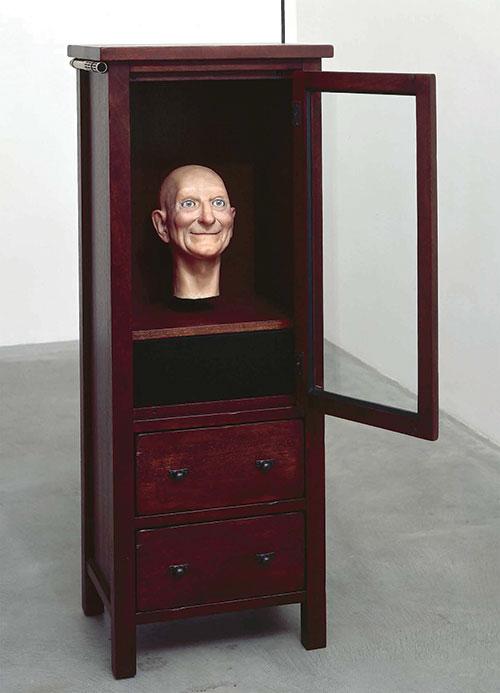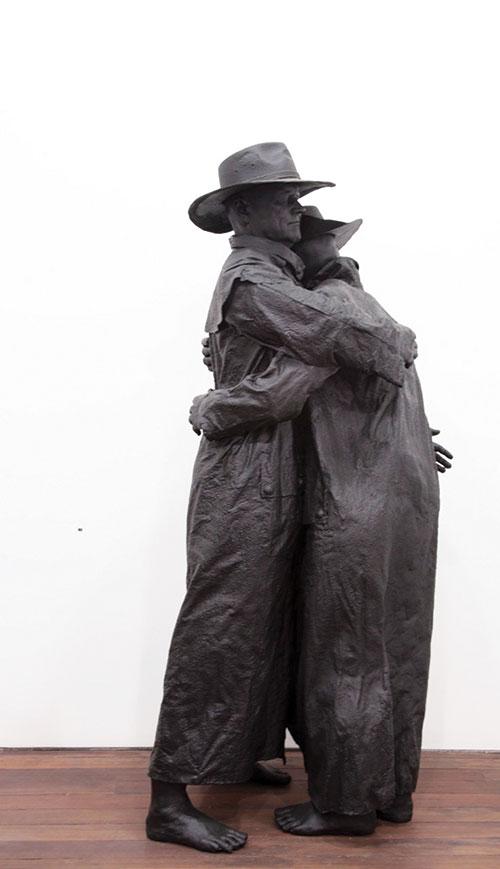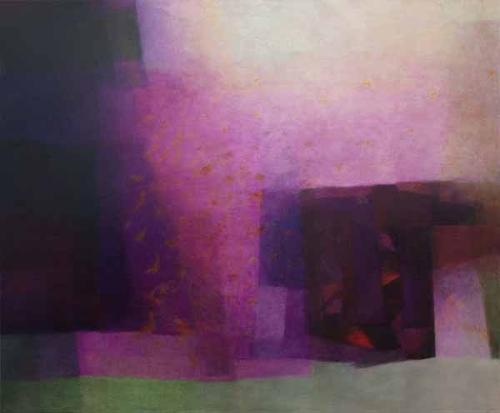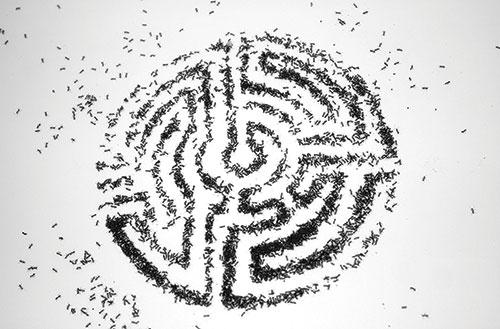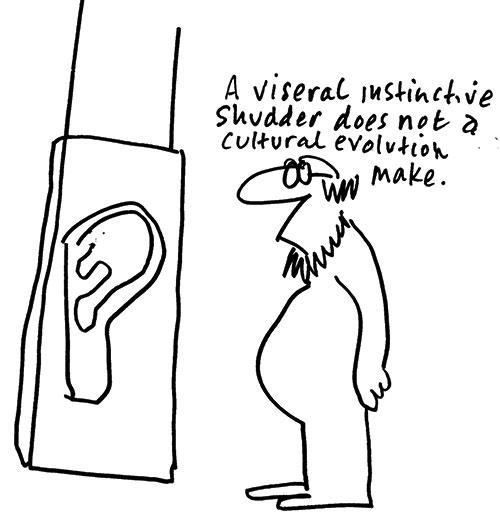.jpg)
In this exhibition, the dialectic between our eschatological future and our mythological past finds a new form, located on a thin wedge between utopia and catastrophe.' Cooper Francis, Synonyms for Savages catalogue essay.
The collection of contemporary sculpture and performance art that makes up Synonyms for Savages: Animal. Archive. Iterations of the Aether. Squid. Mum., an elaborate and evocative exhibition by Adelaide artist and 2014 Samstag Scholar Madison Bycroft, is considered, intelligent and witty. The viewer enters the exhibition space through a 'tunnel’ of black walls that are interspersed with television screens, showing four videos on loop, and is thus immediately confronted with many images, sounds and concepts. The performative element of the show begins in the ‘tunnel’ with a video showing Bycroft in water playing the violin. The artist is joined by friends and animals in Unsung: The primordial which is linked with a repetitive drum sound that underpins the four very different videos. Interestingly the length of each individual work is varied but their fluidity and inter-relatedness marries them. Setting the scene for the rest of
the exhibition.
The artist often uses her body as a tool to explore the relationship between humans and animals. Grittily demonstrated in Entitled - where she shaves her head whilst wrapped in a slow-motion dance with a freshly dead octopus. Her ability to almost become the animal is impressive, the smell, the texture – it is a mesmerising and disturbing piece to watch. In the videos we see her explore the human relationship to animals and as such, our relationship with the earth, consumption and history. Most importantly the future is demonstrated in a science-fiction manner. Again the artist is depicted as the half human-half squid king in the video Rag of Cloth: Ode to the Vampire Squid. Through this work we see the artist questioning the last unknown, the ocean depths and the creatures that inhabit it, the effects we as humans have on that space, and how in turn we relate to it.
Through all her half-human half-animal assemblages, Bycroft investigates our overconsumption and desire to conquer the world and all its secrets. The special effects used in the Vampire Squid film add a sci-fi feel, cheesy and comic in its delivery, while the music underpins the repetitive nature of the images on screen. As Cooper Francis puts it in the catalogue essay: ‘Here we find a squid that, sifting through the archives, exhaustively searching for a name that could be its own, cries out for a humanity with a language in which it would enjoy being known’. Bycroft’s ability to use humour, thus seemingly not taking herself too seriously, adds value to her performance.
Repetition is a common theme throughout the exhibition, the three other video productions use digital enhancement to create stories exploring the relationship between nature our interpretations of and interactions with it. These films range from 1:43 seconds to 3:31 seconds on loop with accompanying monotonous sound that emphasises the repetitive nature of the imagery. The dancing penis video, first one, then another, till multiples are layered to create a field of dancing penises, highlights the hilarity of our bodies, confronting the banality of our existence whilst questioning our domination over animals. After all a penis is just as intrinsic to the male body as the tentacle is to the squid – so why the differentiation?
Bycroft uses digital manipulation to critique the role of humans, the effect we have on the earth and how that effect is going to contribute to its end. As the catalogue pontificates: ‘Will the last day, when nothing remains to be done, finally reveal a totally profane human body, a disenchanted phallus as natural as coral and without mystery, or will history rather end in a total ordering of the world and the eradication of the animal?’
This collection of works leaves the viewer in an almost trance-like state, tantamount to being brainwashed. Moving through the space the constant sound links the performance pieces to the sculptural pieces that at first glance seem static and juvenile. Alluding to the seriousness with which we take ourselves, the entire exhibition, whilst dealing with complex and difficult themes, such as place, language and our relationship with the natural world, past, present and future, is constructed with an engaging element of humour and a comic timing that works very effectively to link these very real concerns together.

